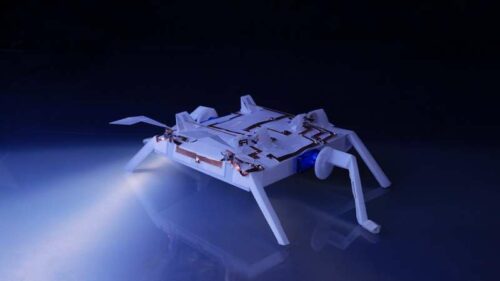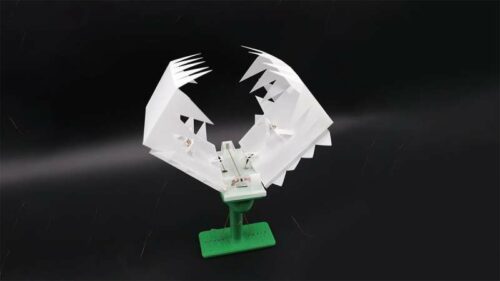- Researchers have developed origami inspired robot systems that can be folded to develop autonomous machines out of thin sheets making them lightweight, compact and easier to transport.
- The chip-free design may lead to robots capable of working in extreme environments where traditional semiconductor-based electronics might fail to function.

While several organizations are developing ways to explore extra-terrestrial worlds, flying those distances is not the only problem anymore. The problem that lies ahead of researchers is what reaches these cosmic bodies and how do we enable technology to explore and analyze. Roboticists have been using a technique similar to the ancient art of paper folding to develop autonomous machines out of thin, flexible sheets making them lightweight, simpler and cheaper to make and more compact for easier storage and transport. However, the rigid computer chips traditionally needed to enable advanced robot capabilities—sensing, analyzing and responding to the environment—add extra weight to the thin sheet materials and make them harder to fold.
A multidisciplinary team led by researchers at the UCLA Samueli School of Engineering has created a new fabrication technique for fully foldable robots that can perform a variety of complex tasks without relying on semiconductors.
Researchers created a system of information-processing units, or transistors, integrated with sensors and actuators by embedding flexible and electrically conductive materials into a pre-cut, thin polyester film sheet. They then programmed the sheet with simple computer analogical functions that emulate those of semiconductors. Once cut, folded and assembled, the sheet transformed into an autonomous robot that can sense, analyze and act in response to their environments with precision. The researchers named their robots “OrigaMechs,” short for Origami MechanoBots.

OrigaMechs derived their computing capabilities from a combination of mechanical origami multiplexed switches created by the folds and programmed Boolean logic commands, such as “AND,” “OR” and “NOT.” The switches enabled a mechanism that selectively output electrical signals based on the variable pressure and heat input into the system.
The team built three robots to demonstrate the system’s potential:
- an insect-like walking robot that reverses direction when either of its antennae senses an obstacle.
- a Venus flytrap-like robot that envelops a “prey” when both of its jaw sensors detect an object.
- a reprogrammable two-wheeled robot that can move along pre-designed paths of different geometric patterns.
The chip-free design may lead to robots capable of working in extreme environments—strong radiative or magnetic fields, and places with intense radio frequency signals or high electrostatic discharges—where traditional semiconductor-based electronics might fail to function.
Reference : Wenzhong Yan et al, Origami-based integration of robots that sense, decide, and respond, Nature Communications (2023). DOI: 10.1038/s41467-023-37158-9








